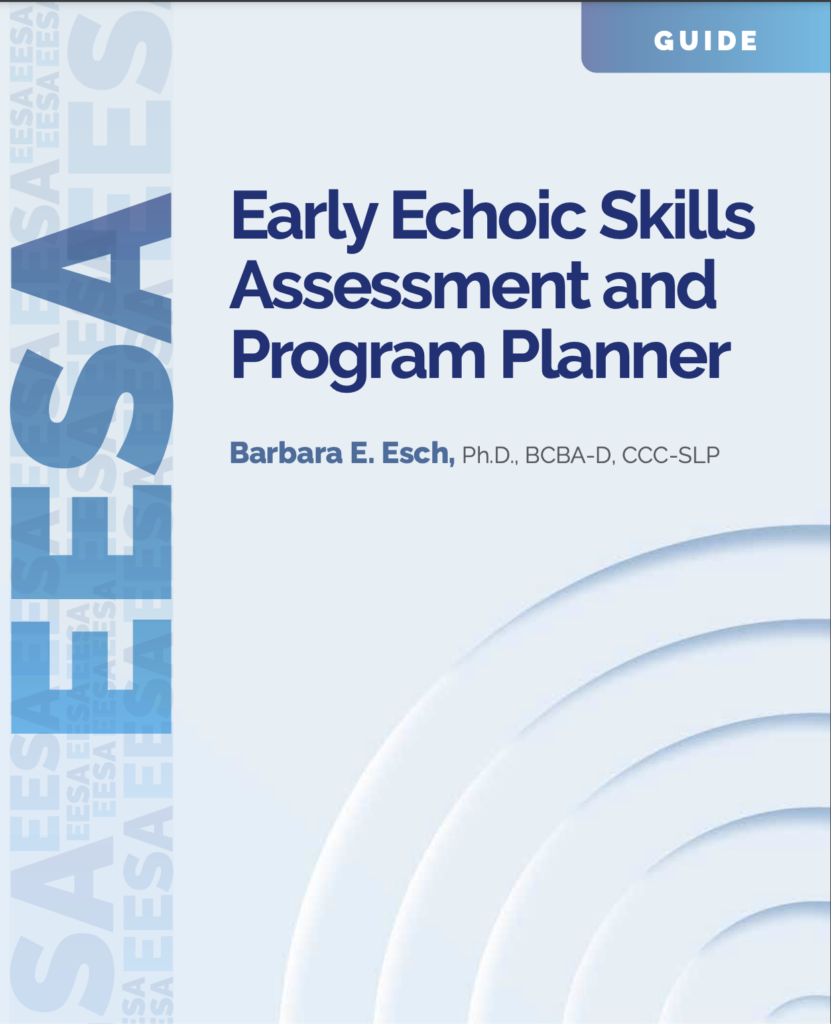Early Echoic Skills Assessment and Program Planner (EESA)
Most humans learn to speak quite easily, with no special training. For those who don’t, the task falls to others, who may find it beyond daunting to figure out where to start. But, in fact, there’s no reason that we should expect ourselves to know how to do this. Speech teaching and jump-starting early vocalizations are not intuitive. The Early Echoic Skills Assessment and Program Planner (EESA) is aimed at making this process a little easier.
Purchase Books
Early Echoic Skills Assessment and Program Planner (EESA)


